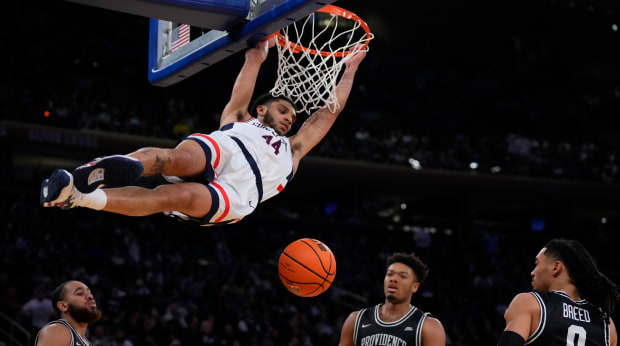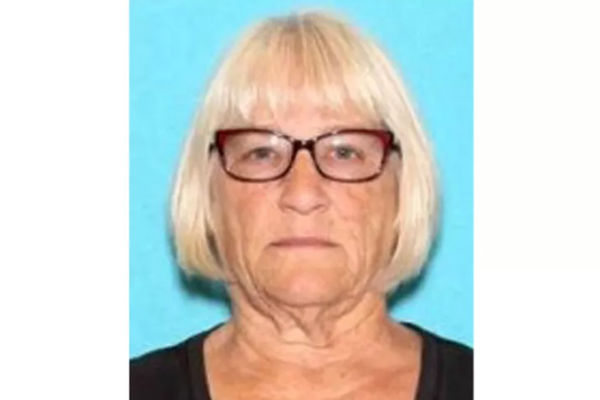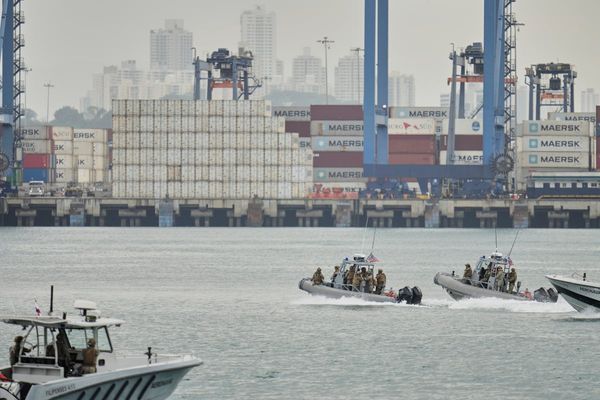It’s Dec. 28, 2022, in Hartford, Conn., and the streets are buzzing with UConn fans. Parking near the XL Center, the site of that night’s Huskies game against Villanova, is hard to come by more than two hours before tip-off. Fans in jerseys are pouring across streets and pooling around the entrances to see the show that is the 2022–23 men’s UConn Huskies.
More than two years before, Hurley had sent a message to the Big East early in the rebuild he had embarked on. “You better get us now, ’cause it—it’s coming.” Now, on this winter evening in Hartford, it feels like UConn has arrived: 13–0 on the season, No. 2 in the AP poll and winners of all 13 games by double digits. The Huskies had looked overwhelming in their run through the Phil Knight Invitational around Thanksgiving, then blew the doors off Florida and Oklahoma State in nonconference play.
This December matchup with Villanova doesn’t seem particularly noteworthy at the time: The Wildcats had come in struggling but actually hung around, leading early in the second half and putting on some late-game pressure before eventually succumbing to the undefeated Huskies. UConn looks beatable on this night, which hadn’t been a frequent occurrence to start the season. Postgame, a chipper Hurley says he believes UConn should have made 13 of its 30 threes rather than the nine it knocked down. Hit those, and the Huskies would’ve rolled to another blowout instead of sweating it out late.
“I thought we got really good threes,” Hurley laments.
There was no real cause for concern that night for Huskies fans, who largely left Hartford happy. But that game against Villanova perhaps finally showed a crack or two in the armor of this otherwise-dominant UConn team. What followed: six losses in UConn’s next eight games, dropping the Huskies from No. 2 to No. 24 in the AP poll and threatening to derail a season that once looked so promising. So how did UConn right the ship and put itself on the path to the Final Four?
The Huskies’ losing skid started harmlessly enough. Road losses against Xavier and Providence didn’t raise too many alarm bells nationally: Against the Musketeers, UConn just went cold in the closing stretch, getting outscored 12–2 in the final four minutes to lose by 10. And winning at Providence is notoriously difficult to do. It didn’t help matters that the Friars took 35 free throws compared to just 19 for the Huskies. UConn then led at halftime at Marquette but got torched defensively in the second half and lost yet another tough road test, for three losses in four games.
Then came the shocker, an 85–74 home loss to a St. John’s team that had lost five of six. UConn was dreadful defensively and turned it over 21 times. All of a sudden, what once looked like the best team in the country was now 4–4 in Big East play. A column that day in the Hartford Courant referred to the season as “going off the rails.”
“That was bad,” sophomore guard Jordan Hawkins says as he shakes his head. “I’ve tried to get that one out of my memory.”
UConn would lose two more games in that skid (at Seton Hall with Hurley out due to COVID-19, then at home against Xavier), but the St. John’s game seemed like rock bottom. Was the Huskies’ hot start a flash in the pan? Were they destined for an early NCAA tournament exit, like the first-round losses they had suffered the previous two seasons? Negativity was bubbling up, especially on the internet, where the same fan base that was flooding bars hours before tip-off a few weeks before was hitting social media with its criticisms of the slumping Huskies.
“I really got hit by the social media aspect of it,” freshman forward Alex Karaban says. “At least for UConn, when they were recruiting me, they were showing me so much love, I thought, They can’t hate me if I come here. It just flips like that. They’ll hate you any second, but they’ll love you any second, too.”
“[Fans] expect highly of us, as they should. This is UConn,” Hawkins says. “They’re used to winning. They should hold us to a high standard, and when we’re not performing, they should let us know.”
Internally, though, confidence never wavered. That started with Hurley, who all season has had a certain brashness in media sessions about the capabilities of his team. He told his players to stay off social media and “pay no attention” to the negativity, according to senior guard Joey Calcaterra, and some players (like Hawkins) deleted the apps altogether. The team that had ripped through the nonconference games was still in there somewhere; the Huskies just needed to rediscover it.
“We lost focus of what our culture was about and how we were playing earlier in the season to get to 14–0,” Calcalterra says. “They just really tried to emphasize getting back to what was working for us and made us successful.”
One of the most vocal players in the locker room was Andre Jackson Jr., the do-it-all junior wing and one of the more veteran members of the team.
“He’s a guy that hates to lose,” Calcaterra says. “When we were going through that little skid, he was the voice in our locker room telling us to do whatever we had to do to turn things around.”

Robert Deutsch/USA TODAY Sports
Jackson was going through struggles of his own at that point. One of the most athletic players in the country, his impact on the defensive end and as a passer made him well worth having on the floor. But his jump shot is inconsistent, and in Big East play teams had started to heavily sag off him defensively, essentially daring him to shoot from distance. Jackson too often took the bait, even getting a technical foul in the aforementioned Villanova game for taunting the Wildcats’ bench after finally knocking one down from distance.
“I think earlier on [in the season] I was taking it personally a lot and looking at it like disrespect. [I] tried to prove them wrong; I’m a shooter,” Jackson says.
It didn’t help that the rest of UConn’s team was hitting a simultaneous shooting dry spell. After shooting 37% from deep in the first 14 games, the Huskies shot just under 33% during that eight-game slide. That number gets worse when you take out Hawkins’s 38% during that stretch, a mark inflated by big shooting days in the losses to St. John’s and Xavier. There were more 9-of-30 days like the one the Huskies had against Villanova than the 13-of-30s Hurley felt like his team deserved: Shots that were going in for the first two months of the season had stopped falling. Add in the physical toll that travel and hyperphysical Big East games were taking on UConn’s bigs, and the Huskies just didn’t seem to have that second gear they had so often flashed in that 14-game winning streak.
“We were bricking threes,” Hurley said in Albany, looking back on that stretch. “The [Big East] kind of wears on you physically and mentally because of the environments and the style of play.”
Calcaterra says he knew the Huskies would right the ship. But sometimes, looking for inspiration, he’d put on YouTube videos of the team’s games at the Phil Knight Invitational against the likes of Alabama and Oregon. They served as a reminder of how good UConn could be when it shared the ball well and shots were dropping.
Meanwhile, Hurley was looking for ways to unlock Jackson, his most dynamic player, and combat the defensive adjustments teams had made that forced Jackson into more perimeter jump shots. Teams would often use Jackson’s defender to help double-team UConn’s centers on post touches without the threat that Jackson would hurt them from three. Hurley countered by involving Jackson more as a cutter and screener in the offense in a role Jackson compared to Draymond Green’s with the Golden State Warriors.
“To be honest with you, coaching mistakes during the season or just took me too long to get Andre to the places where he could still be one of the biggest impact players in terms of winning and losing,” Hurley said following the Elite Eight win over Gonzaga. “There’s not many players in the country that impact the game like this guy does. Once I got better as a coach, and Andre—I wasn’t putting him in a position to be successful. And since we’ve unlocked that code, he’s been unbelievable.”
The impact is twofold: It becomes harder to double-team junior forward Adama Sanogo without leaving Jackson for an easy basket and it unlocks Jackson’s elite passing ability. His 31 assists in the tournament are second only to Kansas State’s Markquis Nowell, and, per Hoop Vision, 27 of those 31 assists have been for UConn dunks or three-pointers.
Plus, after the woes of January, the Huskies’ sharpshooting ways returned in February and March. UConn has shot 39% from three since Feb. 1, a mark that ranks in the top 40 nationally in that stretch. And in the Big Dance, the team’s been even better, shooting a blistering 42% on nearly 10 makes per game.
With Jackson playing to his fullest potential and the shooting rolling again, UConn has looked like the best team in the NCAA tournament—maybe even better than it did in November and December. And without teams in the tournament having the same familiarity with UConn’s personnel that Big East opponents do, the Huskies have rolled to the best point differential through four games in modern tournament history by a non–No. 1 seed.
“We’re very unique with what we have with Adama and these two wings, and then you’re looking at Clingan coming in at 7'2" and the shooting off the bench, we’re an elite defensive team. We’re a top-five offensive team, and we generally beat the other team on the glass,” Hurley said after the Elite Eight win. “And sometimes when people are seeing us for the first time, it’s overwhelming.”
Overwhelming is one world. Unbeatable is another. The latter is how Hawkins described the Huskies at their best after his team’s second win in Albany, the one that punched UConn’s first ticket to the second weekend since 2014. They were arguably more dominant in Las Vegas, winning their Sweet 16 and Elite Eight games by a combined 51 points against teams coming off wins over top title contenders like Kansas and UCLA.
If there was any doubt before, it has since been erased. UConn has established itself as favorites to cut down the nets in Houston, a far cry from the six losses in eight games that left the team reeling.
Hurley, whose confidence never wavered, summed it up rather simply.
“Most teams have lost six, seven, eight games. Even the best teams, if you look at their overall record,” Hurley said in Albany. “We just lost a bunch of games during a really tight stretch.”
That tight stretch is long over. And outside it, no team in the country has looked the equal of the Huskies.







